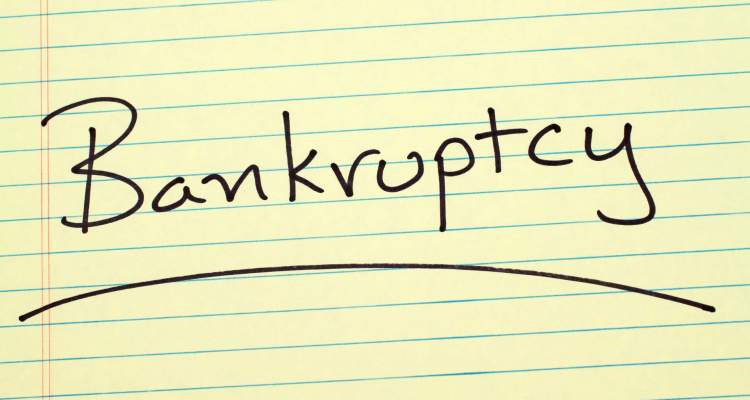
Proposals possible, but Bankruptcy sometimes the only solution
Doug and Sue are typical of those who seek assistance with their financial problems. Many like Doug and Sue never imagined they would one time need the services of a credit counsellor.
For years, the couple has been using credit to increase their income. Doug lost his job 4 months ago and now his severance pay is almost gone. He has a lead on a job, but nothing concrete at this point. Bill collectors are calling, demanding money. Sue is working full time, however, her income is not sufficient to cover the family’s monthly expenses and payments on $30,000 in unsecured debts. Coming to terms with their insolvency has been emotionally draining. The stress from financial difficulty can be overwhelming and, for some, life-threatening. Constant calls from debt collectors, even at work, can affect a person’s job performance, resulting in sleepless nights and lead to severe hardship for some families.
The final solution is to apply for insolvency protection under the federal Bankruptcy and Insolvency Act, either by filing a consumer proposal or by making an assignment in bankruptcy.
What is a Proposal?
Under the Bankruptcy and Insolvency Act, a trustee or an administrator files a proposal or an arrangement between you and your creditors to have you pay off only a portion of your debts. These agreements can also extend the time you have to pay off the debt. As well, they may provide some combination of both — paying off a portion of your debts while extending the duration to finish them off. To be acceptable, your creditors must be better off financially under a proposal than if you go bankrupt.
There are two types of proposals an individual can file:
- Consumer proposals – A person is eligible if his total debts, excluding debts secured by a principal residence, do not exceed $75,000. The consumer proposals cannot be for more than 5 years, however, if the creditors do not accept the proposal, the debtor is not automatically bankrupt. Insolvency counselling is required.
- Other proposals – For non-consumer proposals, there is no restriction on the amount of money a person owes. However, if the creditors do not accept the proposal, the person is automatically bankrupt (effective the date of the creditors’ meeting). Insolvency counselling is not required.
What is Bankruptcy?
Bankruptcy is a legal proceeding that is available to a person who is coping with a financial crisis. One of the main purposes of bankruptcy legislation is to free a person who is hopelessly burdened with debt. Bankruptcy allows a debtor to start fresh and receive a new financial lease on life.
To go bankrupt it is necessary for a person to be insolvent. To be insolvent means to:
- Owe at least $1,000 in debts
- Not be able to meet your debts as they are due to be paid.
Some popular questions from my clients
Will my creditors stop harassing me?
Yes, they will. By law, all actions against a person who files for bankruptcy must cease once the documents are filed. This does not apply to secured creditors, such as bank holdings, a loan on a car or a mortgage.
Who will know that I have gone bankrupt?
Any legal filing of a bankruptcy is a public document that the general public has access to. The credit bureaus TransUnion and Equifax are notified. In the case of a first bankruptcy, the information will be recorded on your credit bureau report for 6 years from the date of the discharge.
For a second or subsequent bankruptcy, the information will remain for 14 years on the Equifax Bureau and for the rest of your life with TransUnion. However, this does not mean that credit cannot be obtained during this time. Read Re-establishing Your Credit Rating After Credit Problems.
How much am I allowed to keep?
Property exempt from seizure when a person goes bankrupt is different in every province. Check with a Bankruptcy Trustee in your province or visit Bankruptcy Canada.
What don’t I keep?
Refer to a Bankruptcy Trustee in your province or visit Bankruptcy Canada.
How do I go bankrupt?
Contact our office to obtain information, or visit a (L.I.T.) Licensed Insolvency (Bankruptcy) Trustee’s Office to discuss these options.
When is the bankruptcy over?
For those people who have not been bankrupt before, an automatic discharge will take place after nine months. The discharge will only take place if the creditors, superintendent of bankruptcy, or trustee have not opposed your discharge and you have received insolvency counselling.
The law allows for a formal process of declaring insolvency by filing either a consumer proposal or an assignment in bankruptcy. Declaring insolvency is a last resort for the overcommitted debtor because of the social stigma attached to this drastic measure and the detrimental effect on the bankrupt’s credit rating. Bankruptcy may be the only alternative for individuals or families that do not have enough income to cover their regular living expenses and repay their debts in full.
Bankruptcy allows an insolvent debtor to obtain relief from a financial crisis, with any non-exempt assets distributed in an orderly fashion among creditors. Bankruptcy is a sad economic fact of Canadian life. For the most part, insolvency is not about money, it is about circumstances in life. Today, approximately 90% of all bankruptcies are consumer, not business bankruptcies. Bankruptcy may be one of the most difficult decisions some people will ever have to make. It is not the easy way out — sometimes it is the only way out.
Doug and Sue must now consider all their options and pick one that will work for them at this point in their lives. This is not an easy task, but it must be done so they can move on and stop living with their debt secret.
Next Week: Doug and Sue’s financial decision.






